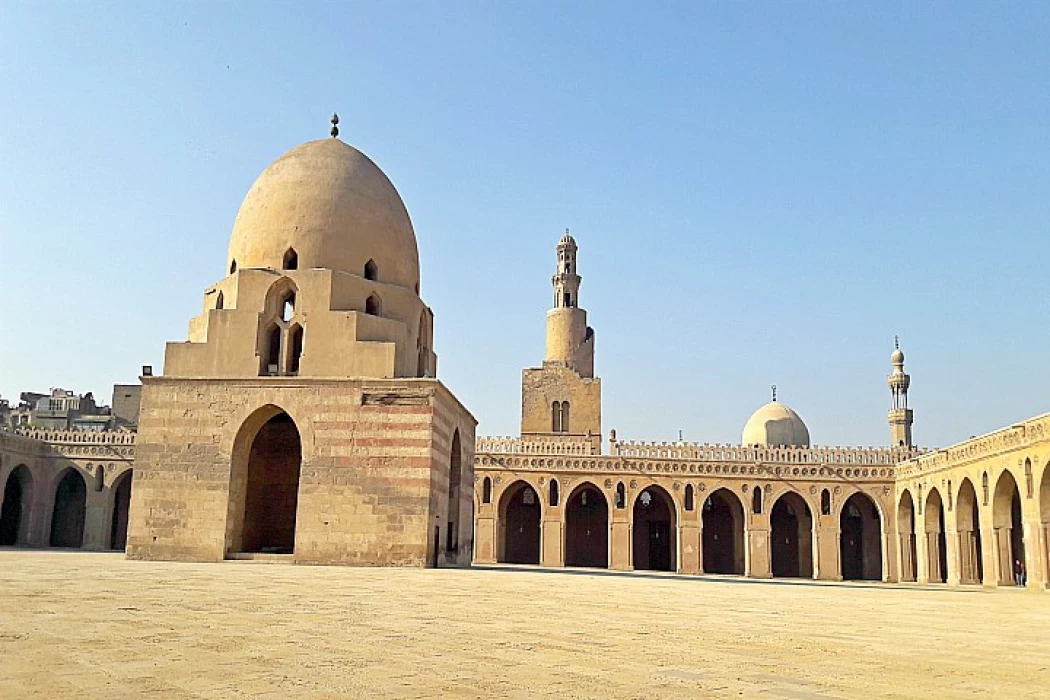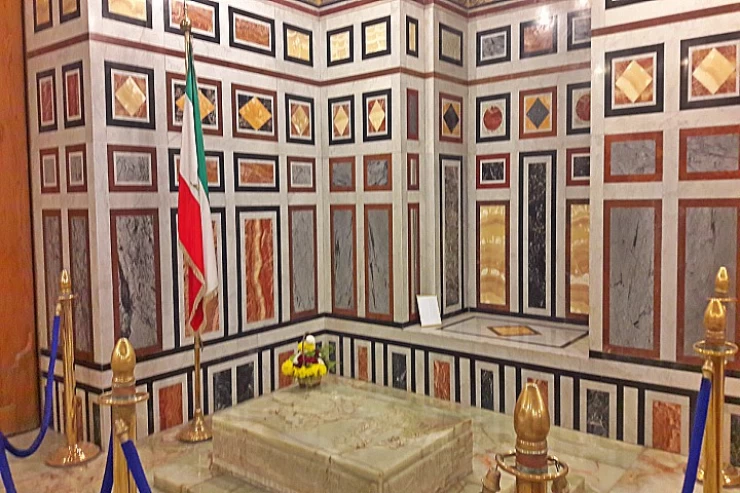
Muslim Conquest in Egypt
The Islamic Conquest of Egypt
When the Islamic armies took control of Egypt in the 7th century AD, they established one of the significant changes that reshaped the political structures along with religious beliefs and cultural practices of the area.
The military victory of Egypt led to its establishment as an Islamic state, which triggered a cultural shift whose effects lasted for hundreds of years.
Historical background
Earlier than the Muslim invasions, Egypt existed as a Byzantine (Eastern Roman) Empire territory after the Roman Empire was partitioned into two during the fourth century AD.
The strategic location and economic value of Egypt have not saved the country from consecutive crises.
Religious persecution against Egyptians, particularly targeting Coptic Christians, occurred because the Byzantines supported the Chalcedonian doctrine, which rejected Monophysitism (the one nature of Christ) as a heresy.
Poor economic conditions: The Byzantine administration imposed heavy taxes on the population, which burdened the peasants and led to general discontent.
Military and political weakness: The Byzantine state lost much of its strength in its repeated wars with the Persians and then with the Muslims in the Levant, which led to the exposure of the Egyptian front.
Reasons for the Islamic conquest
The Islamic conquest of Egypt was not a blind decision but was based on several political, religious, and strategic considerations:
The expansion of the Islamic State: After the successes achieved by the Muslims in the Levant and Iraq, it was natural for them to turn to Egypt, a rich country and a vital key to North Africa.
Propagation of Islam: The religious objective of the conquests was strongly present, as Muslims wanted to reach new peoples with the Islamic message.
Eliminate the Byzantine threat: Egypt was one of the most important remaining Byzantine power centres in the region, and attacking it would have reduced the ability of the Romans to regain their influence in the Levant.
Responding to the Copts' demand: Some sources indicate that the Egyptian Coptic Christians did not oppose the Islamic conquest but welcomed it as a relief from Byzantine persecution.
Amr ibn al-'As
The Islamic army received its command assignment from Caliph 'Umar ibn al-Khattab, who selected Amr ibn al-'As for this role because of his expertise in both politics and warfare. Amr had previous experience with Egypt since he conducted trading journeys there before Islam, while gaining knowledge about its people and land.
The steps of the Islamic conquest of Egypt
The Islamic conquest of Egypt extended from 640 AD (19 AH) through 642 AD (21 AH) while following significant phases of military operations. Before continuing their march, the Islamic forces struck resistance at the Byzantine garrison defending the city of Farma (Pelusium), situated in northeastern Egypt. The city became vulnerable to forces attacking it for about two months until it ultimately surrendered its defences.
The Muslim troops advance until they encounter and besiege Belbeis. The Muslim military force then moved into Belbeis, which was situated in the Nile Delta region. The siege of that city lasted multiple phases until the Byzantine commander al-Maqoukis succeeded in making the defenders open their gates.
The news about incoming Muslim forces prompted Al-Maqqqus to summon the senior officials from Egypt to seek guidance. They suggested that he send an army to help her against the Muslims, in addition to calling on his neighbours for support and gathering armies from all the Egyptian countries in preparation for facing the invaders, but Al-Maqqqus refused and informed those present that no matter how much he prepared, he would not be able to stand against them and that it was wise to send a letter to his daughter asking her to be kind to Yugna and those with him. Some indicate that Al-Maqqus sent a military force to reconnoitre, but it only tried to engage the Muslims in light fighting, but it failed in its mission and lost the battle, and the army was torn apart; about a thousand soldiers were killed, about three thousand were captured, and the rest fled, and the Muslims also lost some soldiers and entered the city of Belbis as a result.
Battle of Ain Shams
After Belbeis, the Muslims headed towards the area of Ain Shams near the capital, Fustat (later Cairo), where a decisive confrontation with the Byzantine army took place.
The battle was fierce, but the Byzantines soon retreated after realizing the Muslims' superior morale and organization.
Babylonians built a massive fortification at Babylon near present-day Cairo on the Nile riverbank due to its key strategic position. The Muslims fought a long siege that lasted months while standing against Theodore, who commanded the Byzantine resistance.
The appeal of Amr ibn al-'As seeking extra soldiers led him to approach Caliph 'Umar ibn al-Khattab, who accepted the request with backing from both Zubayr ibn al-'Awwam and his soldiers. By working in unison, Muslims executed their coordinated wall-climbing strategy until their soldiers breached the Byzantine defensive line to seize Babylon.
Following the collapse of Babylon, the Muslims established peace terms with Coptic leader al-Maqoukas, who showed preference for Muslim relations above further cooperation with the Roman Empire. During this agreement, the city of Alexandria would be transferred to Muslim control after a specific time had passed, as long as the population's security, together with church safety, was guaranteed.
The great Conquest of Alexandria made the city virtually unconquerable. The Muslim soldiers settled outside the city while Egyptian chiefs brought food for the Muslim troops and horse feed, together with route guidance to Alexandria. The two opposing factions among Egyptian cities adjacent to Alexandria arose as supporters either chose the Roman commander-in-chief Theodore or backed the Islamic military forces. The Muslim forces conquered Alexandria in 642 AD, marking the final Byzantine position in Egyptian territory.
The Peace of Alexandria was signed, which stipulated the surrender of the city, the guarantee of religious freedoms for the Egyptians, and the payment of tribute.
The effects of the Islamic conquest of Egypt
The End of Byzantine Rule
With the conquest of Alexandria, the Byzantine Empire's presence in Egypt came to an end after more than seven centuries of Roman-Byzantine rule.
Religious and Cultural Transformation
Although Islamic authorities abstained from enforcing Islam by force upon Egyptians, the religion became increasingly popular among the native population throughout successive centuries. Islam obtained its status as the official state religion of the nation at a later time.
Fustat marked the foundation of Amr ibn al-'As, who constructed the Amr ibn al-'As Mosque, which became the first Islamic capital and the oldest mosque on the African continent.
The circumstances of Coptic people experienced positive developments during Islamic rule, offering more religious liberty and complete ecclesiastical institutional recognition, which allowed the Coptic patriarch to retain his role's responsibilities.
Improving the situation of Copts during Islamic rule, Copts took on greater religious freedom than under Byzantine rule, their ecclesiastical hierarchy was respected, and the Coptic patriarch continued to perform his duties.
Over time, Egypt became a centre of science, jurisprudence, and the Arabic language, and its cities, such as Cairo (later established by the Fatimid Caliphate), emerged as centres of Islamic civilization.
Challenges of the Islamic Conquest
During the Islamic conquest of Egypt, the troops encountered multiple difficulties:
The agricultural character of Egypt created obstacles for Muslims because they started in desert territories.
Local communities around Alexandria showed opposition against Roman and allied forces during Roman times.
A new administrative system needed to be created by Muslims for managing Egypt according to its economic and social structure.















